Are you looking for ways to make your leather recliner stop squeaking? The sound might be annoying, but fortunately, there are solutions to this problem. In this article, we’ll provide answers to some frequently asked questions and offer useful advice on how to stop leather recliner from making noise. Read on and learn how to quiet down your chair in no time!
Reasons Leather Recliners Squeak
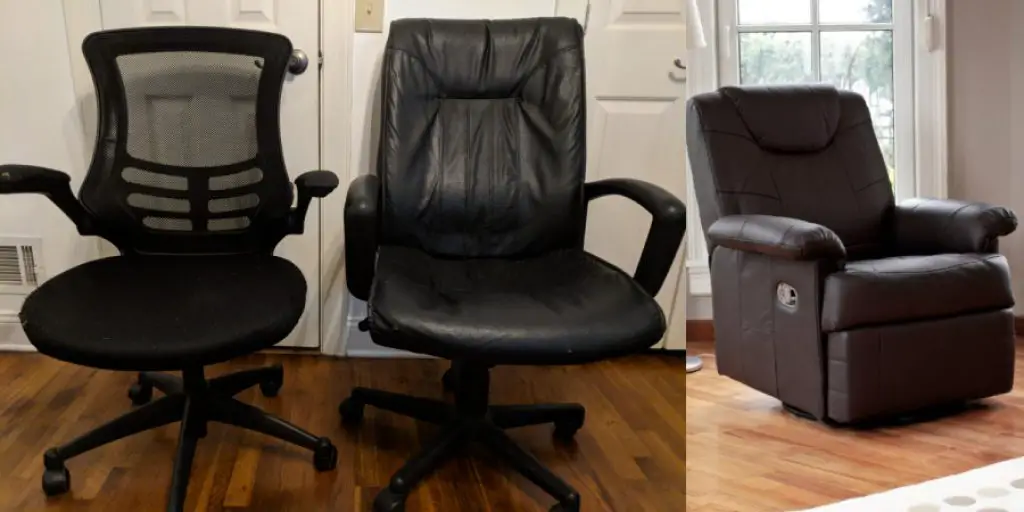
Leather Recliners May Squeak When It’s New
The sound of a squeaky leather recliner is one of the most common complaints among furniture owners. It’s usually caused by wear and tear, but there are other reasons why your chair might be making noise. A new leather recliner may squeak because the material hasn’t had time to settle into place or it could be due to poor construction. To determine whether your recliner is squeaking because it’s new or because it’s worn out, take a close look at the chair.
Leather Recliners Squeak When The Leather Becomes Dry
Leather recliners may also squeak if the material becomes dry over time. This is particularly common in climates with low humidity, as leather needs moisture to stay flexible and soft. When it’s exposed to dry air for too long, the material can become brittle and crack, which leads to a lot of noise when you sit down. To prevent your leather from becoming dry and squeaky, make sure to condition it regularly with a leather conditioner.
This will help keep the material soft and supple, while also restoring its natural oils and preventing cracking.[2]
Squeaking Noise May Come From Internal Mechanisms Of The Leather Recliner
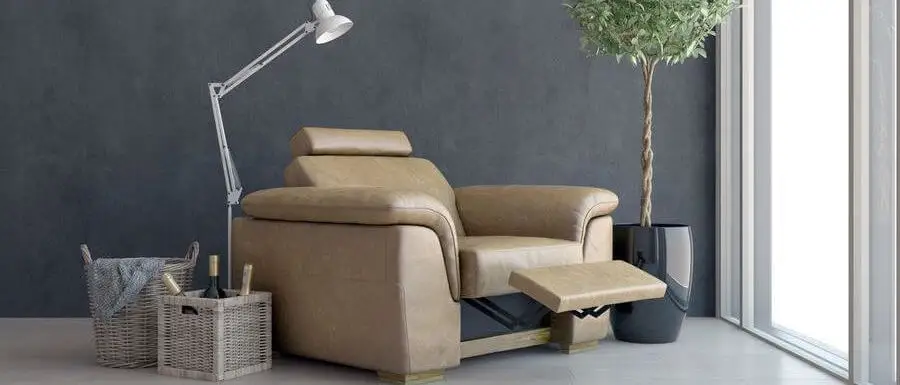
In some cases, the squeaking noise may come from the internal mechanisms of a leather recliner. This includes the levers or screws used to adjust the footrest, backrest, and headrest positions. If you notice that the sound is coming from inside your chair, then it’s likely due to loosened parts or worn out components. To fix this problem, you’ll need to take the recliner apart and tighten any loose parts or replace any worn out components.[2]
How The Leather Has Been Used To Cover The Recliner
Sometimes, the squeaking noise may be caused by how the leather has been used to cover the recliner frame. If the material is too tight, then it could cause friction when you sit down and move around in your chair, leading to a lot of noise. To prevent this from happening, make sure that the leather isn’t stretched too tightly over the frame of your chair.
If it is, you’ll need to loosen it slightly so that it moves freely whenever you shift positions.[2]
From Internal Mechanisms Of The Recliner “Wearing Out”
The internal mechanisms of a leather recliner can also “wear out” over time. This means that parts such as the levers or screws used to adjust the footrest, backrest, and headrest positions may become loose due to regular use.
Leather Material May Have Not Yet Been “Broken In”
Finally, if your leather recliner is squeaking and none of the other common causes are to blame, then it’s possible that the material hasn’t yet been “broken in”. This means that the leather hasn’t had time to soften and become flexible, so it can be quite noisy when you move around in your chair. To fix this problem, you’ll need to use a leather conditioner on the material and let it sit for an extended period of time.
This will help soften the leather and make it more flexible, which should reduce or eliminate any squeaking noises.[2]
Cheap Quality Leather Material
It’s also possible that the squeaking noise is due to cheap quality leather material. If your recliner is made with low-grade leather, then it could be prone to cracking and tearing over time. To prevent this from happening, make sure to invest in a good quality leather recliner that will stand the test of time.[2]
How To Stop Leather Recliner From Squeaking
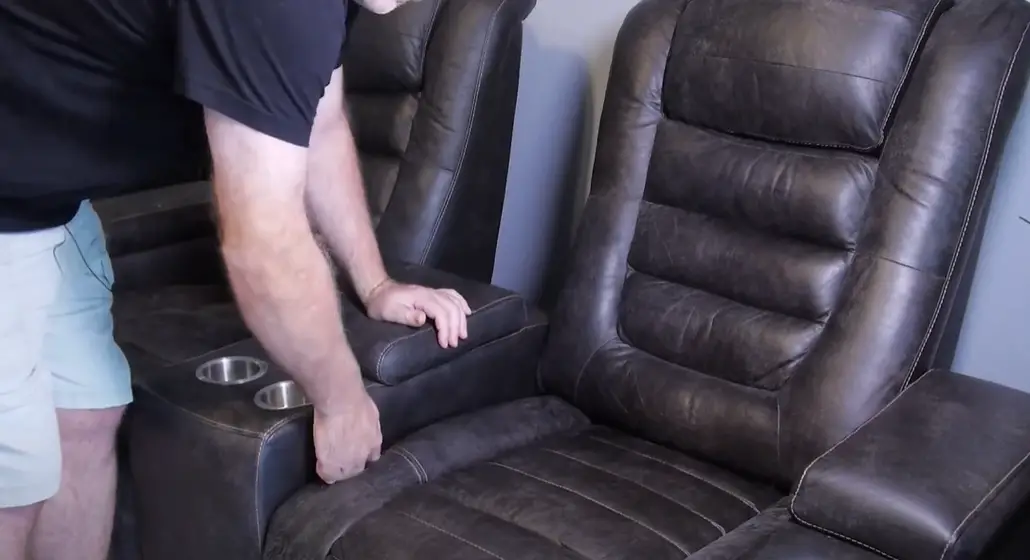
Rubbing Paraffin Wax On The Leather Recliner
One of the most effective ways to stop a leather recliner from squeaking is to rub paraffin wax on it. Not only does this reduce friction, but also adds a protective layer to the leather.
To do this, start by heating up some paraffin wax until it melts. Then use a clean cloth to apply the melted wax on the leather recliner, making sure to cover all the areas that come into contact with another surface. Once done, let it cool and dry before using it again.[1]
Baby Powder Or Talcum Powder
Another way to reduce friction and stop a leather recliner from squeaking is to use baby powder or talcum powder. Start by sprinkling some of the powder on the surface where the two surfaces meet. Make sure to cover the entire surface area evenly with the powder. This should help reduce friction and prevent your recliner from squeaking when you move it around.[1]
Conditioning The Leather Recliner
Leather can often become dry and brittle over time, which can lead to squeaking. To prevent this from happening, you should condition your leather recliner regularly. This will help keep it soft and supple, thus reducing the chances of it squeaking when you move around on it.
To do this, start by rubbing some leather conditioner onto the recliner. Then use a clean, soft cloth to buff it until it shines. Leave the conditioner on for at least an hour before wiping off any excess with a damp cloth. This should help keep your leather in good shape and reduce squeaking significantly.[1]
Making Use of Force on Chair Elements.
If the squeaking is coming from certain parts of the recliner, you may have to apply a bit of force to them. Start by carefully examining the chair for any screws that may be loose. If you find any, tighten them up with a screwdriver.
In some cases, applying pressure while moving the recliner around can also help reduce squeaking. This is most effective with parts that are connected to each other with clips or rivets. Applying pressure while moving around should help reduce the friction and stop the squeaking.
These are some of the best ways to stop your leather recliner from squeaking. While these methods may not always be completely effective, they should at least help reduce it significantly.[1]
Tighten the Screws On the Recliner.
If all else fails, tightening the screws on the recliner may be necessary. Start by finding all the visible screws and using a screwdriver to tighten them up. You should also check for any hidden screws that may have become loose over time and tight them as well.
Tightening up the screws should help reduce movement between parts of the recliner and therefore reduce the squeaking. Just make sure to not overtighten them, as this could cause more damage than good.[1]
Apply Leather Conditioner.
Leather that is dry and brittle can often squeak, so applying a leather conditioner regularly can be beneficial. Start by rubbing some conditioner onto the recliner with a soft cloth. Then leave it on for at least an hour before wiping off any excess with a damp cloth.
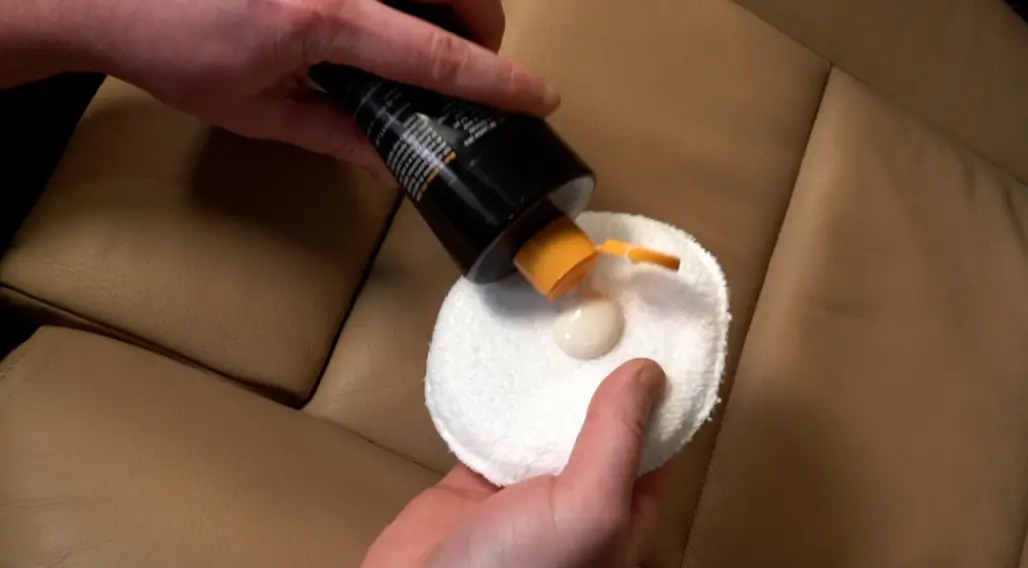
This should help keep the leather supple and reduce friction when you move around, thus reducing the squeaking. Just make sure to use a good quality leather conditioner and follow the instructions carefully.[1]
Lubricate the Joints, Hidden Areas, and Screws
One of the most effective ways to stop a leather recliner from squeaking is by lubricating all of the joints, hidden areas, and screws. This can be done with either oil or special lubricants made for this specific purpose. It’s important to note that some types of oils can damage leather furniture so it’s best to use an oil specifically designed for leather products.
To start, inspect the recliner for any visible areas where the leather meets another part of the chair such as joints, screws, or other hidden areas. Apply a few drops of oil to each area and work it in with your fingers or a rag. Once you’ve applied oil to all the squeaky areas, push down on the chair and move it.[1]
Add New Felt Pads to the Recliner’s Base.
Another way to stop a leather recliner from squeaking is to add new felt pads to the base of the chair. Felt pads can help to reduce the sound of friction as the chair moves and prevent further damage. The best type of felt pad for this purpose is one that’s thick enough to provide extra cushioning while also being thin enough so as not to affect the recliner’s integrity.
To add new felt pads, measure and cut the appropriate amount of felt for each area where it will go. For example, if there are four screws under the chair base that make contact with the floor then you would need to cut four pieces of felt in order to fit them around each screw head.[1]
Replace the Springs If Necessary.
If the squeaking is coming from the springs of your recliner, then it’s best to replace them. The cost of replacing the springs will vary depending on what type and size you need, but generally speaking they’re a fairly inexpensive fix that can save you from having to buy an entirely new chair.
When replacing the springs, it’s important to make sure that you get ones that are the right size and strength for your chair. Too weak or too strong can lead to further problems down the line, so it’s best to take the time to find a set of springs that will meet your needs.[1]
FAQ
How do I stop my Lazy Boy recliner from squeaking?
The first step to prevent your Lazy Boy recliner from squeaking is to check the hinges and tighten any screws or bolts that may have come loose. Loose screws can cause a squeaking noise as you recline in your chair. If this doesn’t work, try lubricating the moving parts of the recliner with a light silicone oil or furniture wax – this will help reduce any friction and should stop the squeaking.
How do you lubricate a recliner?
To lubricate your recliner, you’ll need a can of light silicone oil or furniture wax. Start by turning the recliner upside down and spraying some lube directly onto the moving parts that connect to the chair’s legs. You may need to wiggle the parts around to ensure the lubricant is evenly distributed across all surfaces. Once done, turn the recliner right side up and recline it a few times to work the lubricant into the mechanism.
You should also consider spraying some lube onto the metal frames of your recliner, as well as into any crevices or small openings. This will help keep dirt, dust, and other debris out of the frame and reduce squeaking noises.
Do leather recliners last?
Leather recliners can last for many years with proper care and maintenance. Regularly dusting and wiping down your leather furniture with a damp cloth will help keep it looking its best, while also preventing dirt from accumulating in the seams and crevices of the material.
Can bed bugs live in leather recliners?
Bed bugs can live in leather recliners, but it is highly unlikely. Bed bugs prefer to hide in dark, warm places such as mattresses or bedding. In order to prevent any infestation, you should regularly inspect your furniture and vacuum the seams and crevices of the chair thoroughly. If you notice any signs of a bed bug infestation, contact a professional exterminator right away.
How long should a leather recliner last?
If properly cared for, a leather recliner can last anywhere from 8-10 years. This is dependent on the quality of the chair and how often you use it. Over time, leather can become worn or cracked if not taken care of and this will reduce its lifespan. Regularly dusting and wiping down your recliner with a damp cloth will help keep it.
What are the disadvantages of leather chair?
The main disadvantage of leather chairs is that they can be expensive. Leather furniture also requires regular maintenance and cleaning in order to keep it looking its best. Over time, leather may crack or discolor if not taken care of properly, which will reduce the lifespan of the chair. Additionally, some people have reported that their leather recliners become very hot after extended periods.
Are leather recliners worth it?
For many people, leather recliners are well worth the investment. Not only do they provide ultimate comfort and support, but they also look great in any room of the house and can last for years with proper care and maintenance. If you’re looking for a quality, stylish piece of furniture that will be sure to stand the test of time, then a leather recliner may be worth the cost.
Useful Video: Cure Home Theater Seat Noise With Cinefart No More Leather Squeaks
Conclusion
By following the steps outlined above, you should be able to stop your leather recliner from squeaking. Take a few minutes to inspect and lubricate any of its moving parts as well as clean the fabric. If these measures don’t work, then it may be time for a new recliner! But if you take care of it properly, your leather recliner can last for years. We hope this guide has been helpful in teaching you how to stop your leather recliner from squeaking. Thanks for reading!
References
- https://favoredleather.com/leather-recliner-squeak/
- https://www.reclinersresty.com/how-to-stop-leather-recliner-from-squeaking/

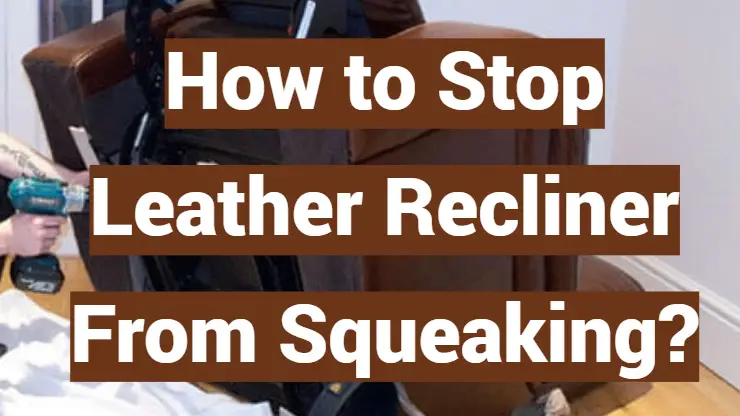

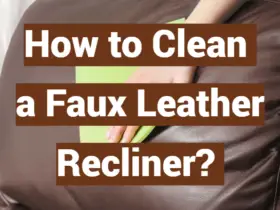

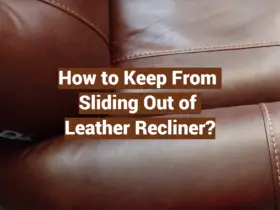

Leave a Reply